7 Public Statue Controversies: Modeling a Video Recording
Andrew Majeske
This student assignment is intricately linked with the John Jay College Social Justice eReader chapter: Statue Controversies: Dred Scott v. Sanford, Chief Justice Taney and Gandhi
In 2022 I developed (with help) one of a series of special seminar courses for incoming community college transfer students. The courses were designed for students interested in entering majors leading to criminal justice careers. These courses were designed to use important US Supreme Court Cases as touchstones. I selected the US Supreme Court’s 1857 Dred Scott v Sanford case as the touchstone for the course I was developing.

I then used this case as the springboard towards examining the public statue controversies that began to embroil the US in the lead up to and wake of the “Unite the Right” rally in Charlottesville VA in 2017, and accelerated rapidly in the wake of the murder of George Floyd in May of 2020.
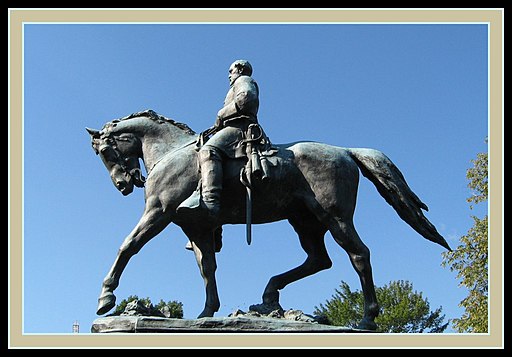
A key part of what connects the 1857 Dred Scott decision to the contemporary statue controversies was a heated Congressional debate that took place in January of 1865 over whether to install the statue of Chief Justice Taney in the US Congress, so that his statue could be placed alongside the statues of all previous Chief Justices. While this Congressional debate delayed for a time the placement of the Taney statue in Congress, it did not prevent the statue from eventually being installed.
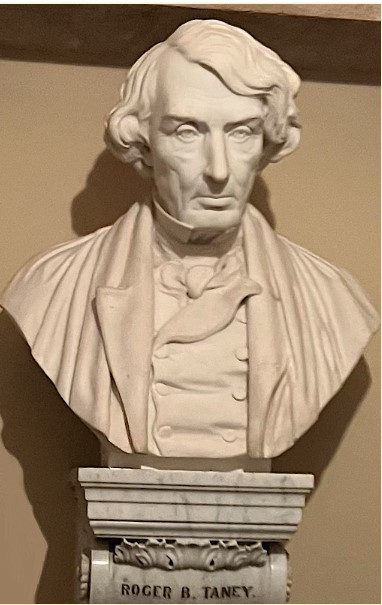
The other part of what connects the 1865 Congressional debate over the Taney statue to the contemporary statue controversies is the remarkably similar heated Congressional and cultural debate that erupted recently over what to do with this same Chief Justice Taney statue in the wake of George Floyd’s murder; this current debate resulted in the replacement of the Congressional Taney statue with a statue of Thurgood Marshall, a civil rights icon, and the first Black Supreme Court justice.

The first time I taught this Dred Scott themed course, I decided to model for my class their first individual assignment. The assignment required the students to identify a public statue near where they lived or worked, and then to take a video with their phones showing the statue. The video they were to shoot was to be short, only a minute or two. They were just going to describe who or what the statue represented, and, if the statue depicted a particular person, why that person being honored with a statue. I also asked them to check to see if there had been any controversy about the statue they had chosen to film.
This assignment was more about process than content in that I wanted the students to get comfortable recording a video in which they themselves were featured, and to learn how to upload the resulting video to YouTube (to the individual channel they were to create if they did not have one already). Finally, I wanted them to learn how to copy the shareable url link for this video once it was on YouTube, and to paste it to the assignment. These were skills they would need to use later in the course.
I did not in the least expect there to be a controversy about the statue I had selected to model for my students in the town where I lived. The reason I did not expect controversy was because the statue I had identified, which was located in the central park of my home town, depicted the Indian civil and human rights hero, Mahatma Gandhi.
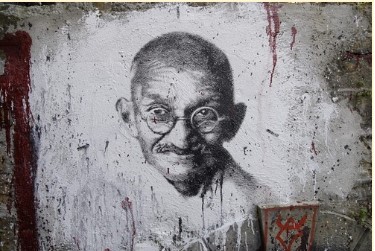
In my experience I had only heard praiseworthy (even reverential) things said and written about Gandhi, and I knew that Martin Luther King relied upon Gandhi’s example in relation employing civil disobedience to secure human and civil rights for oppressed peoples, from the many times I had taught King’s Letter from a Birmingham Jail.
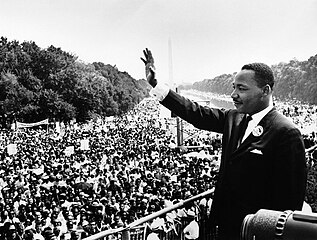
So, in September of 2023 I drove down to the central park and searched for the statue I had learned was located there. But after circling the park twice, I could not find it anywhere. I finally noticed a boarded up fenced in area just outside the playground boundary fence, where there were two benches with dedicatory plaques.
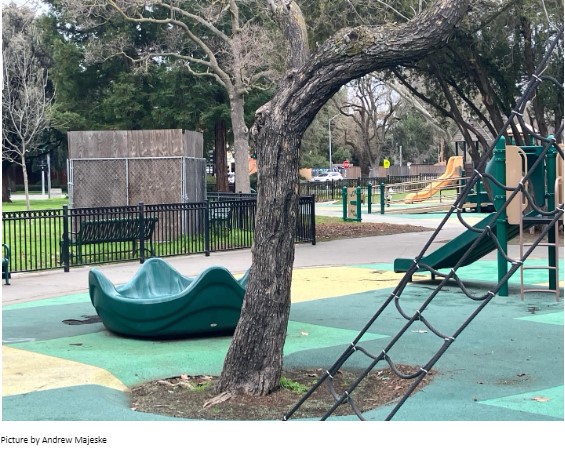
The boarded-up area looked like it might be concealing broken machinery, or a similar hazard, just like other enclosures I was used to seeing on or near construction sites. Since there was no signage on the fence surrounding the plywood enclosure, I walked over to read the dedicatory plaques on the benches, which were positioned on either side of the plywood enclosure. Both plaques listed the individuals who had donated the money to sponsor the benches, or in whose name such money had been donated. But they both also contained a quotation by Gandhi, which I took to be clue that the Gandhi statue should be very nearby.
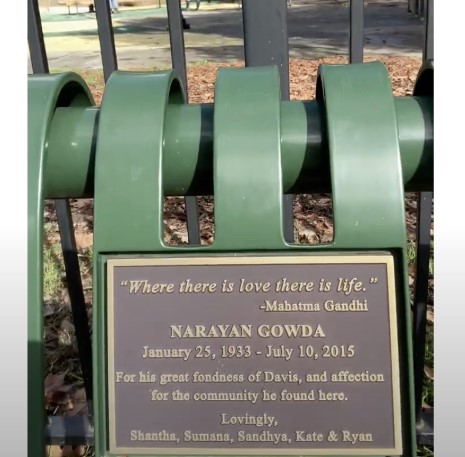
I then looked more closely at the plywood enclosure and surrounding fence, which had a padlocked gate. The plywood was discoloring and had apparently been in place for at least several seasons, as it was not only discolored, but also warped. At one of the enclosure’s corners I noted that the warping of the plywood had been so extensive that there was a crack through which I could peep. Only then did I catch sight of the cement base for a statue and bronze foot sticking up from a bronze pedestal resting on the base.
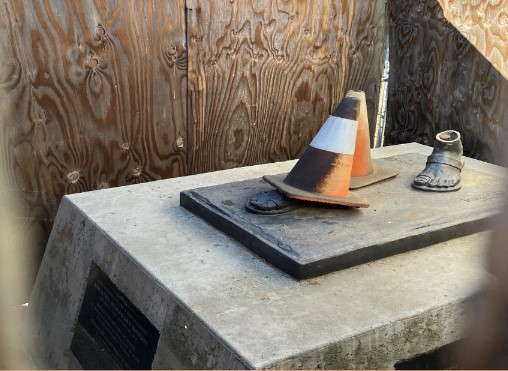
The first thing I noted was that this foot, and presumably another, which was hidden under an orange road repair cone, had once supported a statue. I assumed that someone had cut the statue down, based on the evidence of the sharp break in the metal visible at the ankle. I had seen enough. I commenced to record for my class what I had found while searching for the statue in my town’s central park. I told the class that I now assumed there must be some controversy about this Gandhi statue, one heated enough to cause vandals to tear the statue down. In closing my video recording, I promised to come back with more information about this statue after I Iearned more about the circumstances surrounding the statue’s destruction.
I soon decided that the way in which I would inform the class about the circumstances of this Gandhi statue’s destruction would be in the form of a model group presentation, a presentation I would prepare, record, and show them later in the course, at the point where I assigned to them the culminating course project for which each of the class’s groups would research and prepare, record, and present to the class their presentation on a particular statue controversy.
After completing my research on the controversy about this statue, I recruited my wife to be part of my “group” for the model presentation, and she agreed to join the Zoom meeting I had set up at which the presentation would be delivered and recorded. After recording and reviewing the result, I decided not to rerecord it in order to achieve a more polished product, since the sorts of imperfections that appeared in the initial recording would be useful to show to the class.
The model presentation I eventually showed the class revealed that the controversy surrounding the Gandhi statue in my town was not a unique situation—controversies regarding Gandhi statues were occurring all over the world, as I quickly discovered. But I only found out about this overarching controversy later, after I had investigated the background leading up the destruction of my town’s Gandhi statue.
By searching in our town’s local newspaper, I learned that Narendra Modi’s Indian government had, since the early days of Modi’s administration, worked to place statues of Gandhi throughout the world in anticipation of the 150th anniversary of Gandhi’s birth which would occur in 2019.

One of these statues was gifted by the Indian government to my town in 2016. To my considerable surprise, there had been protests surrounding this statue from the moment it was dedicated. My town is not large, how had I missed this?
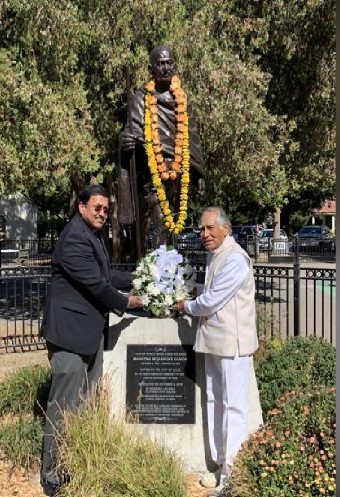
It turned out that the driving force behind the protests was the Sikh student organization at the local university. Their complaints centered on actions taken by Gandhi towards Sikh’s and their religion relating to Gandhi’s move to reabsorb Sikhism into Hinduism in the years following Indian independence. But other protesters accused Gandhi of being racist, because of racially charged statements he had made in South Africa as a young man, and because of his attempts to politically marginalize the Dalits in the new Indian state. Still other protestors complained about Gandhi’s treatment of women, a complaint centering upon Gandhi’s testing of his virtue by sleeping chastely with naked women, including his own teenage niece. You can see these various grievances reflected on the protest signs held by the demonstrators at the statue dedication.
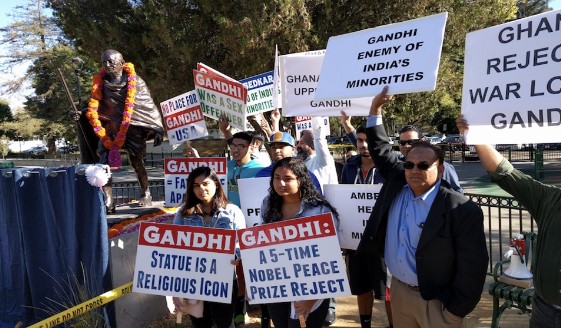
In addition to these peaceful protests beginning in 2016, my town’s Gandhi statue was vandalized at night with red paint in June of 2020, in the wake of George Floyd’s murder. Expletives were written in red paint on the statue and its base, including the word “rapist.”
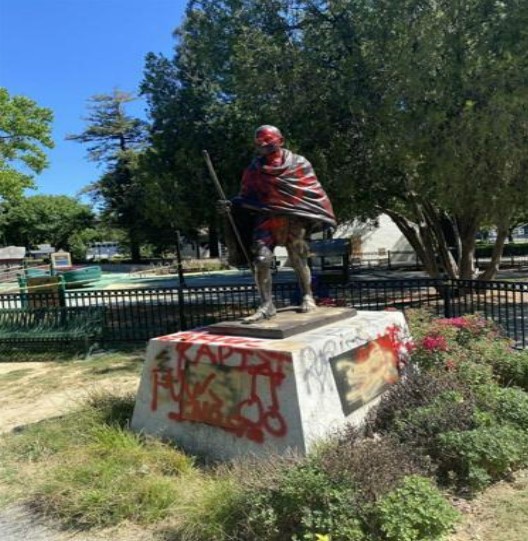
Then, just six months later, in January 2021, vandals again visited the statue at night, this time toppling the statue by sawing it off at the ankles, and beheading it.
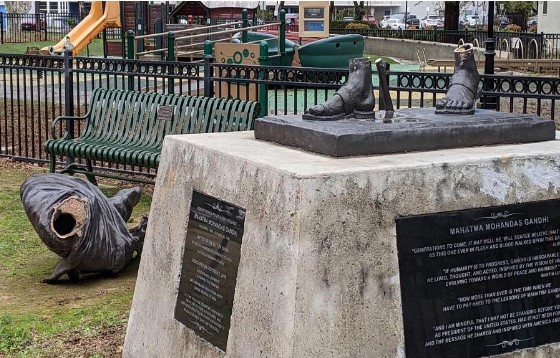
The town quickly moved the toppled statue to storage, and erected the fenced off plywood enclosure to hide the statue base from public view (pictured earlier).
About the author: Andrew Majeske is a professor in the English department at John Jay College of Criminal Justice.
